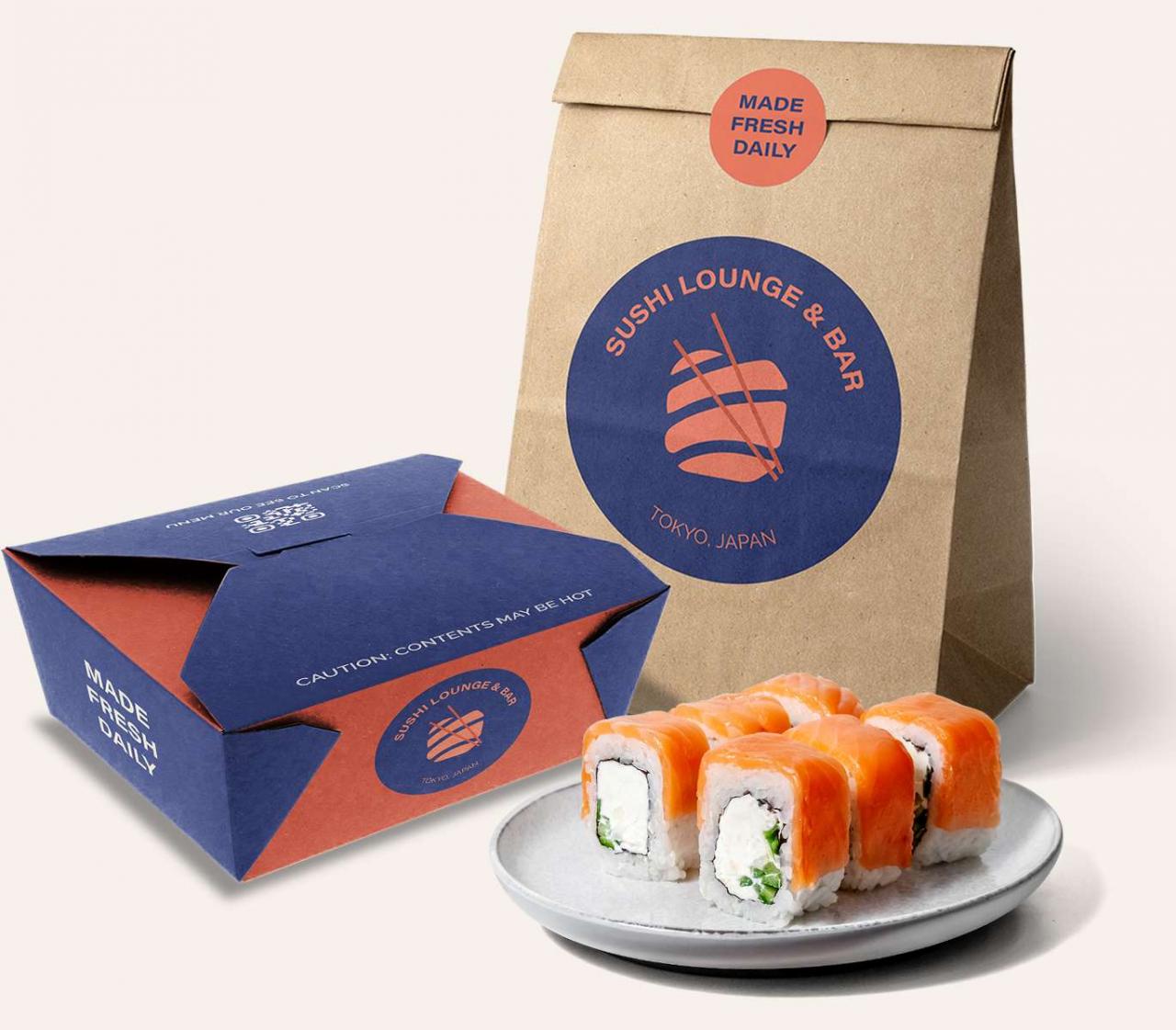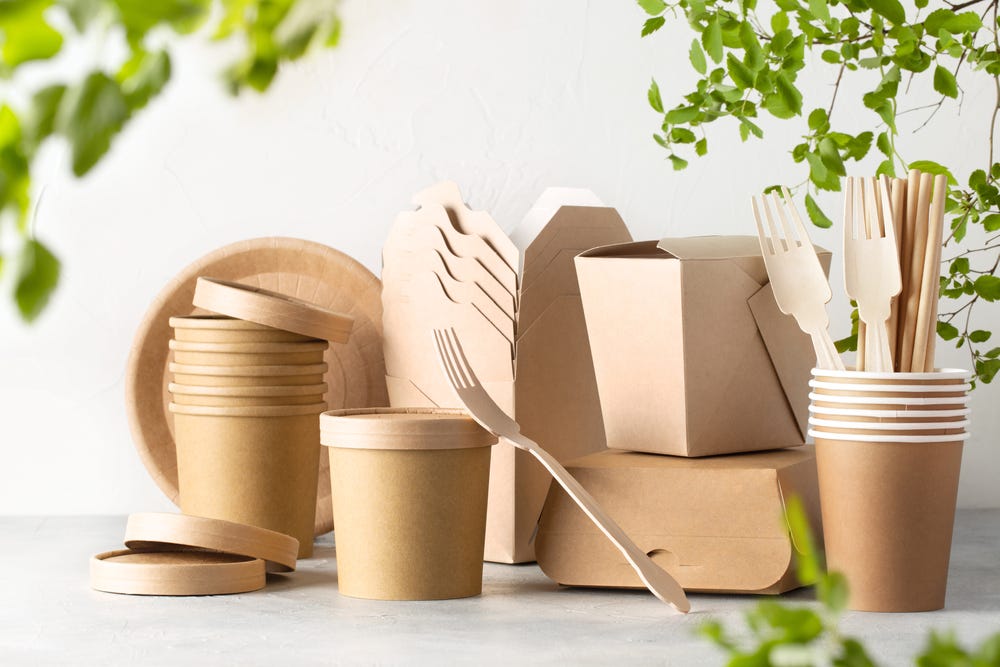Food packaging plays a pivotal role in our modern food system, safeguarding the quality and safety of our food while also addressing environmental concerns. From the materials used to the design and technological advancements, food packaging has a multifaceted impact that touches upon various aspects of our lives.
This comprehensive guide delves into the intricate world of food packaging, exploring the materials and design considerations, the role it plays in food safety and preservation, its environmental impact, and the evolving consumer trends and preferences that shape its future.
Materials and Design

Food packaging plays a crucial role in preserving the quality, safety, and shelf life of food products. The choice of packaging materials and the design of the packaging are critical factors that influence the effectiveness of food packaging.
The selection of packaging materials is influenced by various factors, including the type of food product, its shelf life, the intended storage and distribution conditions, and the environmental impact of the packaging.
Materials, Food packaging
- Plastics:Plastics are widely used in food packaging due to their versatility, low cost, and ability to provide a barrier against moisture, oxygen, and other environmental factors. Common types of plastics used in food packaging include polyethylene (PE), polypropylene (PP), and polyethylene terephthalate (PET).
- Metals:Metals, such as aluminum and tinplate, are used in food packaging to provide a strong barrier against moisture, oxygen, and light. Metal packaging is often used for canned foods, beverages, and pet food.
- Glass:Glass is an inert material that is resistant to corrosion and does not leach into food products. Glass packaging is commonly used for beverages, sauces, and condiments.
- Paper and cardboard:Paper and cardboard are biodegradable and recyclable materials that are often used for packaging dry foods, such as cereals, pasta, and snacks.
The design of food packaging is also important to consider. The packaging should be functional, providing protection for the food product while also being attractive and informative to consumers. Factors to consider in packaging design include:
Design Considerations
- Size and shape:The size and shape of the packaging should be appropriate for the food product and its intended use.
- Materials:The materials used in the packaging should be compatible with the food product and provide the necessary protection.
- Graphics:The graphics on the packaging should be visually appealing and informative, providing consumers with important information about the product.
- Sustainability:The packaging should be designed to minimize environmental impact, using sustainable materials and practices.
By carefully considering the materials and design of food packaging, manufacturers can ensure that their products are protected, safe, and appealing to consumers.
Food Safety and Preservation

Food packaging plays a critical role in ensuring the safety and preservation of food products. It acts as a barrier against external contaminants, such as bacteria, moisture, and oxygen, that can cause spoilage and pose health risks.
Preservation Methods
Various methods are employed to preserve food within packaging:
- Modified Atmosphere Packaging (MAP):Involves replacing the air inside the package with a controlled mixture of gases, typically a combination of oxygen, carbon dioxide, and nitrogen, to slow down microbial growth and extend shelf life.
- Vacuum Packaging:Removes air from the package, creating a low-oxygen environment that inhibits the growth of aerobic bacteria and prolongs freshness.
- Active Packaging:Incorporates antimicrobial agents or oxygen scavengers into the packaging material to actively inhibit microbial growth or reduce oxygen levels.
- Intelligent Packaging:Uses sensors or indicators to monitor food quality and provide information about freshness, spoilage, or temperature abuse.
Challenges and Advancements
Food preservation packaging faces challenges such as maintaining product quality, minimizing environmental impact, and addressing consumer concerns. Advancements in packaging technology are continuously being made to address these challenges:
- Biodegradable and Compostable Materials:Sustainable packaging options are being developed to reduce waste and promote environmental friendliness.
- Nanotechnology:Nanotechnology-based coatings and films are being explored to enhance barrier properties and extend shelf life.
- Smart Packaging:The integration of sensors and wireless communication into packaging allows for real-time monitoring and remote management of food quality.
Environmental Impact
Food packaging plays a significant role in protecting and preserving food, extending its shelf life, and ensuring its safety. However, the environmental impact of food packaging has become a growing concern due to the use of non-biodegradable materials and the generation of waste.
Non-biodegradable Materials
Many traditional food packaging materials, such as plastics, metals, and glass, are non-biodegradable. They can take hundreds of years to decompose, accumulating in landfills and polluting the environment. The production of these materials also requires significant amounts of energy and resources, contributing to greenhouse gas emissions.
Waste Generation
The disposal of food packaging waste is another major environmental issue. A significant portion of food packaging ends up in landfills, where it can leach harmful chemicals into the soil and water. Incinerating food packaging also releases toxic fumes into the atmosphere.
Sustainable Packaging Materials
To address the environmental impact of food packaging, there is a growing demand for sustainable packaging materials. These materials are biodegradable, recyclable, or compostable, reducing waste and pollution.
- Biodegradable materials, such as paper, cardboard, and plant-based plastics, break down naturally over time, minimizing their environmental impact.
- Recyclable materials, such as aluminum, steel, and some plastics, can be reprocessed into new products, reducing the need for virgin materials.
- Compostable materials, such as paper, cardboard, and certain bioplastics, can be broken down by microorganisms into nutrient-rich soil.
Challenges and Opportunities
While sustainable packaging materials offer environmental benefits, there are challenges associated with their adoption. These include higher costs, limited availability, and potential performance limitations. However, there are also opportunities for innovation and collaboration to develop more sustainable and cost-effective food packaging solutions.
By promoting the use of sustainable packaging materials, reducing packaging waste, and increasing recycling and composting efforts, we can significantly reduce the environmental impact of food packaging.
Consumer Trends and Preferences: Food Packaging

The food packaging industry is constantly evolving to meet the changing needs and preferences of consumers. In recent years, there has been a growing demand for packaging that is sustainable, convenient, and informative.
Marketing and branding play a vital role in food packaging design. Packaging can be used to create a positive brand image, differentiate products from competitors, and encourage consumers to make a purchase. Technology is also having a major impact on consumer expectations for food packaging.
Consumers are increasingly demanding packaging that is interactive, informative, and personalized.
Sustainability
Consumers are increasingly concerned about the environmental impact of their food choices. As a result, there is a growing demand for sustainable food packaging. Sustainable packaging is made from materials that are renewable, recyclable, or biodegradable. It also minimizes waste and pollution.
- In 2021, a study by the Food and Agriculture Organization of the United Nations (FAO) found that over 14% of global food production is lost due to inadequate packaging.
- A report by the Ellen MacArthur Foundation estimates that the food packaging industry produces over 150 million tons of plastic waste each year.
Convenience
Consumers are also looking for food packaging that is convenient and easy to use. Packaging should be easy to open, reseal, and store. It should also be lightweight and portable.
- A study by the University of California, Davis found that consumers are willing to pay more for food packaging that is convenient and easy to use.
- A survey by the Food Marketing Institute found that 75% of consumers prefer food packaging that is resealable.
Information
Consumers are also demanding more information about the food they are buying. Packaging can be used to provide consumers with information about the ingredients, nutritional value, and safety of a product.
- A study by the Center for Science in the Public Interest found that 90% of consumers want more information about the food they are buying.
- The Food and Drug Administration (FDA) requires food packaging to include certain information, such as the name of the product, the ingredients list, and the nutritional information.
Technology
Technology is also having a major impact on consumer expectations for food packaging. Consumers are increasingly demanding packaging that is interactive, informative, and personalized.
- Smart packaging can be used to track the temperature of food, monitor its freshness, and provide consumers with information about the product.
- Augmented reality (AR) can be used to create interactive packaging that allows consumers to view product information, recipes, and videos.
Innovation and Future Trends
The food packaging industry is constantly evolving, with new innovations emerging all the time. These innovations are driven by a number of factors, including the need to improve food safety, extend shelf life, and reduce environmental impact.One of the most important trends in food packaging is the development of sustainable packaging materials.
These materials are designed to be biodegradable, compostable, or recyclable, helping to reduce the amount of waste that goes to landfills. Another important trend is the use of active packaging, which can interact with food to extend shelf life or improve food safety.
Emerging Trends in Food Packaging Design
In addition to new materials, there are also a number of emerging trends in food packaging design. These trends include the use of more sustainable materials, the use of more active packaging, and the use of more innovative and creative packaging designs.
Future of Food Packaging
The future of food packaging is bright. As the industry continues to innovate, we can expect to see even more sustainable, more active, and more creative packaging solutions. These solutions will help to improve food safety, extend shelf life, and reduce environmental impact.
Questions Often Asked
What are the key factors to consider when choosing food packaging materials?
Factors such as the type of food, shelf life, barrier properties, cost, and environmental impact play a crucial role in selecting appropriate packaging materials.
How does food packaging contribute to food safety?
Packaging acts as a protective barrier against contamination, preserves freshness, and extends shelf life by controlling factors like moisture, oxygen, and light exposure.
What are the challenges in reducing the environmental impact of food packaging?
Balancing sustainability with functionality, managing waste effectively, and developing biodegradable or recyclable materials pose significant challenges in minimizing the environmental footprint of packaging.